EXTENSIVE RANGE OF VEGETABLES & FRUITS

Products are sold under the “DESERT MAGIC” brand.
The name has established itself as well known and trusted brand across the Middle East, Europe and Asia.

GREEN CABBAGE
Green cabbage has smooth, dark or pale green outer leaves and its inner leaves are pale green or white. It is a rich source of Vitamin C and contains both soluble and insoluble fibre.
![]() OCT-JUN
OCT-JUN

SWEET CORN
Also known as corn on the cob, sweetcorn is composed of rows of tightly packed golden yellow kernels, growing along a tough central core. The kernels are super sweet and juicy.
![]() NOV-MAR
NOV-MAR

GREEN PEPPERS
A fresh, crisp green bell pepper is a tasty vegetable that can be a regular part of your healthy eating plan. This vegetable is low in calories and contains 0 grams of fat and is a good supply vitamins and minerals. Their mildly sweet flavor makes green peppers versatile enough to be included in a wide variety of nutritious recipes.
![]() NOV-MAY
NOV-MAY

CHERRY TOMATOES
These tomatoes have a unique, fruity tanginess. They are perfect in a summery salad or a great accompaniment to meat.
![]() NOV-MAY
NOV-MAY

SNACK TOMATOES
Sweet Pearl Snacking Tomatoes are extremely sweet and less acidic. As the name suggest, these tomatoes are ideal for snacking for both adults and children. Other serving suggestions are in salads, pizza toppings and even in pasta. These tomatoes do not squirt when bitten into so less mess!
![]() NOV-MAY
NOV-MAY

LONG PEPPERS
Long Sweet peppers come in red, yellow, green and orange colors and are 20 to 25 centimeters long with a curving convoluted shape. Its walls are thin and tender, encompassing few seeds that are perfectly edible and add a sweet, succulent and crisp taste to the pepper.
![]() NOV-MAY
NOV-MAY
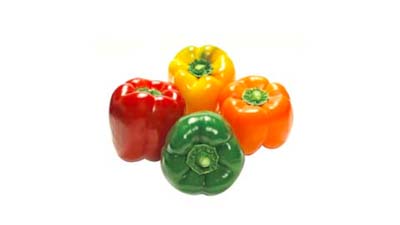
BELL PEPPERS
A wonderful combination of tangy taste and crunchy texture, bell peppers are the Christmas ornaments of the vegetable world with their beautifully shaped glossy exterior and colours ranging from green, red, yellow, orange, purple, brown to black.
![]() NOV-MAY
NOV-MAY

BELL PEPPERS MIX
One single spectrum pack with all the crunchy goodness and variety in it.
![]() NOV-MAY
NOV-MAY

MINI BELL PEPPERS
These small, thumb size peppers measure about three inches tall and have a crisp texture. They are sweet and have very few seeds. Mini Bell Peppers are thinner-skinned than larger peppers and their texture withstands grilling and cooking.
![]() NOV-MAY
NOV-MAY

ICEBERG LETTUCE
Iceberg lettuce is a crisp head lettuce which is widely consumed across the world. It is characterized by its tightly furled, crunchy leaves and a mild, sometimes watery flavour. There are many uses for iceberg lettuce, including salads, some ethnic cuisine, and garnishes.
![]() DEC-APR
DEC-APR
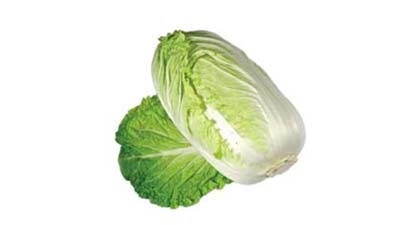
CHINESE CABBAGE
Chinese Cabbage is a leaf vegetable commonly used in Chinese cuisine. The vegetable is related to the Western cabbage and of the same species as the common turnip. The most common form of Chinese Cabbage has a cylindrical tight head. Its outer leaves are light green with a thick, white midrib.
![]() DEC-APR
DEC-APR

BUTTER HEAD / FRISEE / OAK LEAF
Oak Leaf Lettuce has crunchy stems and tender leaves. The leaves are very attractive with the oak leaf shape. The plant is attractive with fairly tight rosettes of medium green leaves. Oak Leaf Lettuce makes classy mixed salads and stays tasty even in drought and heat. They are found in red and green varieties.
![]() NOV-MAR
NOV-MAR

LOLLO ROSSA
Lollo Rossa is one of the prettiest looking lettuces. Its frilly, deeply curled, frosty green leaves are kissed with rose red hues on the edges, giving it an extremely decorative appearance. It adds class to any salad.
![]() NOV-MAR
NOV-MAR

GREEN BEANS
The most sought after variety in the bean family, French Beans are long, slender, meaty green pods with tiny seeds inside. These famous beans are highly nutritious and have a distinctive flavour quite unique from other beans. French Beans are also commonly called snap beans because of the sound they make when they are broken in pieces.
![]() DEC-MAR
DEC-MAR

TURNIP
Turnips are made up of edible roots, stems and leaves. Several stems of the plant sprout from the bulbous root into broad green leaves. Turnips have a similar flavor and texture to radishes. Their bone white flesh is firm, crunchy succulent, earthy sweet and peppery.
![]() NOV-APR
NOV-APR

BEETROOT
Beetroots are made up of both an edible root and edible leaves, 10-12 inch red and green leafy stems ascend from the ruby red, smooth, bulbous root. As beets have the highest sugar content of any vegetable, their flavor is typically sweet.
![]() NOV-APR
NOV-APR
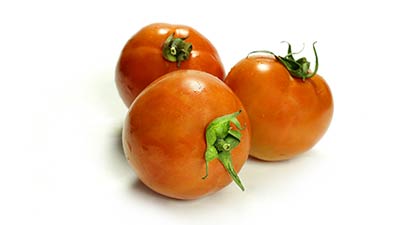
PREMIUM TOMATOES
Gourmet tomatoes are the most common tomatoes. These tomatoes are round in shape and bright red in colour. They are ideal in salads, sandwiches, pasta sauces, soups and stews.
![]() NOV-MAY
NOV-MAY

BROCCOLI
Broccoli possesses abundant fleshy green flower heads, very much like its close relative the cauliflower, but instead of white it has green tree-like florets. The large mass of flower heads is surrounded by leaves. A cool weather crop, Broccoli is high in Vitamin C and soluble fibre.
![]() NOV-FEB
NOV-FEB

PUMPKIN
Encased in a moderately hard shell, the thick edible flesh of the pumpkin harbors a central multi-seed cavity. Pumpkins come in many different shapes and sizes. Their bright orange skin can be smooth, bumpy or vertically lined with ridges. Their flesh is orange and typically offers a sweet mild flavor.
![]() NOV-JUN
NOV-JUN

CAULIFLOWER
Cauliflower is made up of tightly bound clusters of florets that form a dense head, similar to that of Broccoli. Its flavor is mild with subtle cruciferous and nutty sweet nuances, a taste which is amplified when roasted. The entire cauliflower, its leaves, trunk, stems and florets are all edible.
![]() NOV-APR
NOV-APR

SWEET MELON
Sweet Melons are pale yellow, oval in shape, with textured skin and a honey-sweet taste. This melt- in- your- mouth fruit is the perfect fruit for a summer fruit salad.
![]() OCT-JUN
OCT-JUN

HONEY DEW MELON
Honeydew Melons will turn a creamy yellow colour and the skin will have a slightly waxy feel when ripe. They will be firm with a small amount of softness at the stem and will be fairly large. Honeydew Melons are rich in Vitamin C and are most flavourful if eaten at room temperature.
![]() OCT-JUN
OCT-JUN
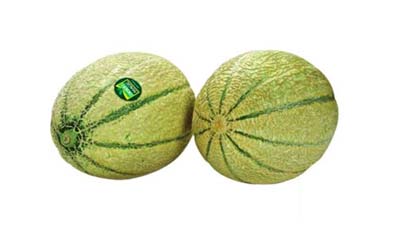
ROCK MELON
The Italian Cantaloupe melons are characterized by a nice golden, heavily netted skin, an oblong or round shape, orange flesh and a wonderfully sweet flavour. Cantaloupe melons are an excellent source of Vitamin A and beta carotene. One serving of cantaloupe melons contains the recommended daily amount of Vitamin C.
![]() OCT-JUN
OCT-JUN
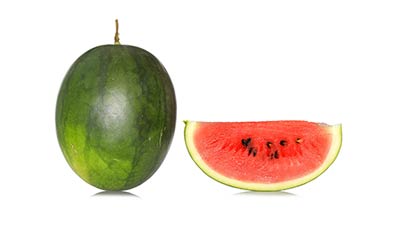
WATER MELON
Typically, these melons are round in shape with dark green outer appearance. The flesh is firm, bright red in colour, very sweet and crisp with mottled with very few small, tan-black seeds.
![]() OCT-JUN
OCT-JUN

CARROT
The carrot has a thick, fleshy, deeply colored root, which grows underground, and feathery green leaves that emerge above ground. Carrots belong to the Umbelliferae family along with parsnips, fennel, caraway, cumin and dill which all have the umbrella-like flower clusters that characterize this family of plants. It is a salad, soup and stew favourite.
![]() JAN-JUN
JAN-JUN

BUTTERNUT SQUASH
It has a sweet, nutty taste similar to that of a pumpkin. It has tan-yellow skin and orange fleshy pulp with a compartment of seeds in the bottom. An excellent source of fiber, vitamins A, C & E, manganese, magnesium, and potassium.
![]() OCT-JUN
OCT-JUN
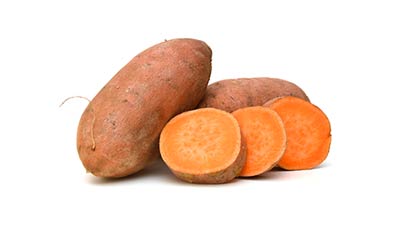
SWEET POTATOES
Sweet Potatoes are roughly ovate and cylindrical with tapered ends and golden-brown in colour. Sweet Potatoes have a sugary flavor and can be firm or soft, with white-fleshed varieties having the firmest, driest flesh, and the orange-fleshed a softer, moister texture.
![]() FEB-MAY
FEB-MAY

POTATOES
Potatoes are one of Mother Nature’s best-kept secrets. This delicious, family-favorite vegetable is not just good but good for you. With just 110 calories, one medium, skin-on potato provides 45% of your daily value of vitamin C and more potassium than a banana.
![]() FEB-MAY
FEB-MAY

APPLES
“An apple a day keeps the doctor away” is an old Welsh proverb that most of us are familiar with, but what makes this fruit so special? As one of the most cultivated and consumed fruits in the world, apples are continuously being praised as a “miracle food”.
Apples are extremely rich in important antioxidants, flavanoids, and dietary fiber. The phytonutrients and antioxidants in apples may help reduce the risk of developing cancer, hypertension, diabetes, and heart disease.
![]() ROUND THE YEAR
ROUND THE YEAR

Avocado
The avocado (Persea americana) is a tree, long thought to have originated in South Central Mexico, classified as a member of the flowering plant family Lauraceae. The fruit of the plant, also called an avocado (or avocado pear or alligator pear), is botanically a large berry containing a single large seed known as a “pit” or a “stone”. Avocado is effective in lowering “bad” cholesterol, or LDL.
![]() ROUND THE YEAR
ROUND THE YEAR

Bananas
Bananas are among the most popular fruits on earth. Native to Southeast Asia, they are now grown in many warmer parts of the world. There are many types of bananas available, which vary in color, size and shape. The most common type is the yellow banana, which is green when unripe. Bananas contain a fair amount of fiber, as well as several antioxidants and nutrient that moderate blood sugar levels.
![]() ROUND THE YEAR
ROUND THE YEAR

Berries
A berry is a small, pulpy, and often edible fruit. Berries are typically juicy, rounded, brightly colored, sweet or sour, and do not have a stone or pit, although many pips or seeds may be present. Common examples are strawberries, raspberries, blueberries, blackberries, red currants, white currants and blackcurrants.
![]() ROUND THE YEAR
ROUND THE YEAR

Mango
Mangoes have been named the most widely consumed fruit in the world. They have a range of possible benefits. The mango is a member of the drupe family, a type of plant food with an outer fleshy part surrounding a shell (what we sometimes call a pit) that contains a seed. There are many different kinds of mangoes. They range in color, shape, flavor, and seed size. Mangoes of India are famous in the world for its sweetness, richness and unique flavor, India is the largest producer of mangoes in the world and it’s an important Agricultural fruit of the country.
It is the national fruit of India, Pakistan, and the Philippines, and the national tree of Bangladesh.
![]() ROUND THE YEAR
ROUND THE YEAR

Orange
Oranges are low in calories and full of nutrients, they promote clear, healthy, skin and can help to lower our risk for many diseases as part of an overall healthy and varied diet. Oranges are a popular fruit because of their natural sweetness, wide variety of types and diversity of uses, from juices and marmalades to face masks and candied orange slices.
An orange has over 170 different phytochemicals and more than 60 flavonoids. Many of these have been shown to have anti-inflammatory properties and strong antioxidant effects.
![]() ROUND THE YEAR
ROUND THE YEAR

Papaya
Papayas grow in tropical climates and are also known as papaws or pawpaws. Their sweet taste, vibrant color, and the wide variety of health benefits they provide make them a popular fruit. The papaya, a previously exotic and rare fruit, is now available at most times of the year.
The possible health benefits of consuming papaya include a reduced risk of heart disease, diabetes, cancer, aiding in digestion, improving blood glucose control in people with diabetes, lowering blood pressure, and improving wound healing.
![]() ROUND THE YEAR
ROUND THE YEAR

Pear
Pears are a mild, sweet fruit with a fibrous center. They are rich in important antioxidants, flavonoids, and dietary fiber and pack all of these nutrients in a fat-free, cholesterol-free, 100-calorie package. Consuming pears may help with weight loss and reduce the risk of developing cancer, hypertension, diabetes, and heart disease if eaten as part of an overall healthy diet.
![]() ROUND THE YEAR
ROUND THE YEAR

Pineapple
Pineapple is a tropical fruit available in any grocery store and a staple in many homes around the world. Pineapples are now enjoyed in solid, dried, and juice forms. In Central and South America, pineapple is not only valued for its sweet taste, it has been used for centuries to treat digestion problems and inflammation.
![]() ROUND THE YEAR
ROUND THE YEAR
